Lewin Benjamin (ed.) Genes IX
Подождите немного. Документ загружается.

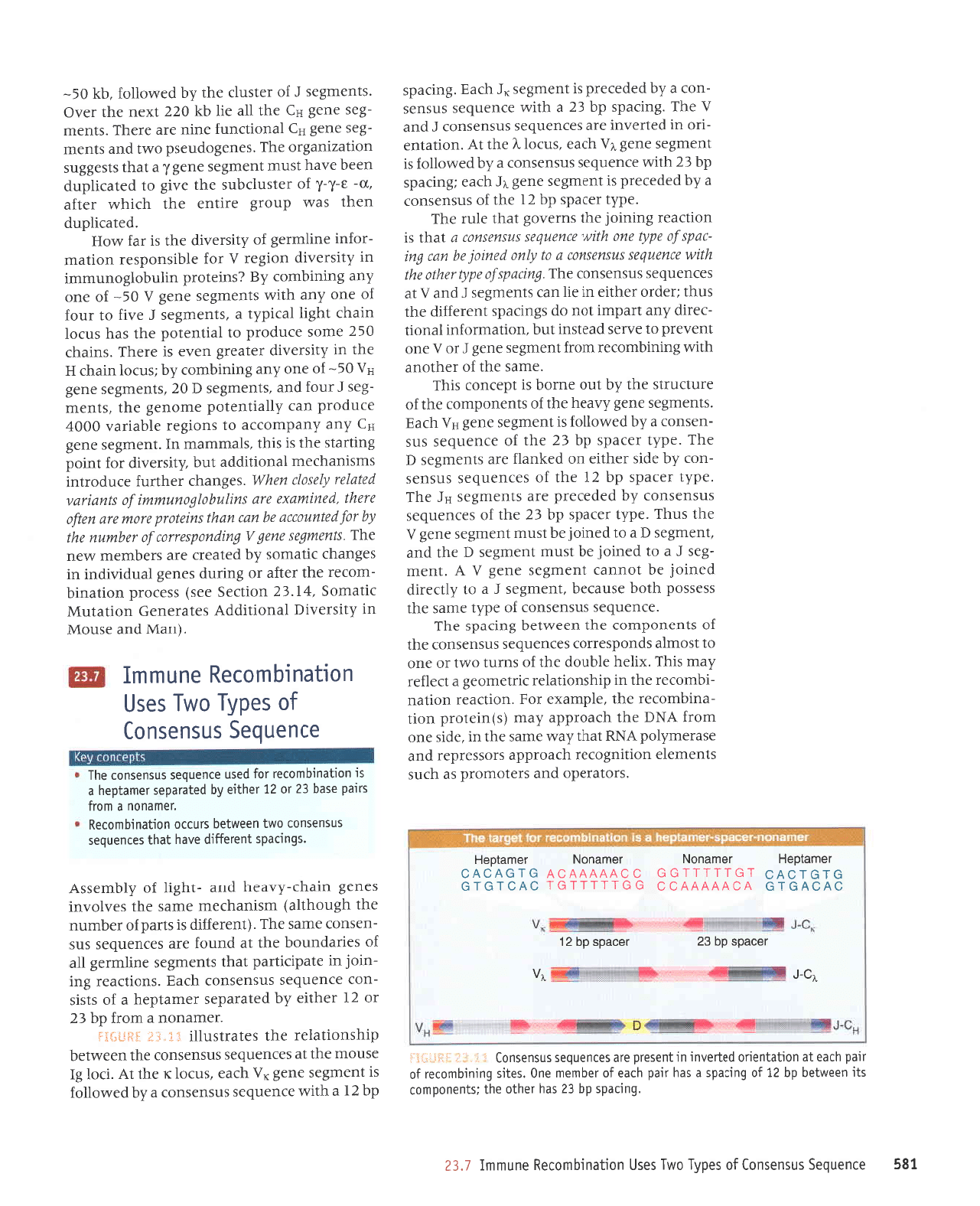
Igg
aluanbas
snsuasuol
Jo
sad^I oMI sasn uollPurqulolau
eunuull
/'€z
'6utreds
dq
g7
seq
teqlo aql
jquauoduol
slr uaaMlaq
dq
Zt
lo
6utrpds e seq rred
qlee
Jo
loquour au0
'solts
6uLuLquorel
1o
rLed
qree
lp
uor,lpluauo
pailonur
ut
luaseld
ele seluanbes
snsuasuol
i
i":.:i
llJilllii:!
'sJolPJado
PuP
sralouord
se
qrns
slueruala
uorlruSorar
qreordde
srosseJdJJ
pue
aserarur{1od
yNu
teqr
r(B.tt elues
Jql
uI
'JpIS
euo
ruoJJ
VN(
aqt
qreordde .deru
(s)uratord
uo1l
-eulqruoJeJ
aql
'aldruexa
JoJ
'uolllPJr
uolleu
-rquo)er
aql
ur drqsuollelJJ
JIJleuoaB
e
na1;ar
Leru srql
'xllaq
Jlqnop Jqt
Jo
surnt
oMl
ro auo
ol
lsoule
spuodsarror
saruanbas
snsuJsuoJ
eql
;o
sluauodruoJ
aql uJaMlJq
Suneds
aq1
'aruanbas
snsuesuo)
yo
ad.{1
erues
aql
ssassod
qloq
JsnpJeq
'tuaru8as
1
e or
,(ltlarlp
paurof
aq
louup)
tuaru8as
aua8
1
y
'luaru
-8as
1
e o1
paurol
eq
tsnu luau8as
O
eqt
pue
'tuaru8as
q
e ot
pautoI
eq
tsnu luau8as
aua8
1
Jql snqJ
'adz{.l
rateds
dq
g7
aqt
1o
saruanbas
snsuasuof,
,(q
papara:d
are
sluaruSas
Hf
aqJ
'adLt
rareds dq
71
aqt
1o
saruanbas
snsues
-uor
.dq epIS
JeqtIJ uo
pa>luelJ
arB
sluaru8as
(
aqt
'ad,{r
rareds
dq
E7
aqr
;o
aruanbas
sns
-uJsuor
e.{q
pa.azrollo; st
luaruSas
aua8
u1
qreg
'sluaur8as
aua8
.d,teaq aqt
Jo
slueuoduror
aqt
1o
eJnlJnJts
aql [q
lno
euJoq
st
tdaruor
stql
'Jrues
aql
Jo
reqlouP
qtpr,r
SururquoJeJ
ruoJJ
luatuSas
aua8
1ro
A
euo
luarrard
ol e^res
pealsul
lnq'uoIlPluJoJUI
IPUOII
-rarrp.{ue
tredut lou
op
sSutreds
luJrJJ}Ip
Jql
snqt
lrapro JeqlrJ
ur arl ue) stuau8as
f
pue
A
]e
saluanbas
snsuesuof,
aqT Cunadsto
adft nt11o
a4t
r\ltrvr atuanbas
snsuasun
a o1 [1uo
pautof aq uut
6ut
-tads
to
ad& auo
4l!/w
iluanbas
snsuasuu
12
leql
sI
uorlJear
SururoI aqt sura,ro8
leql
JInr
eqJ
'ad.dl
rareds
dq
61
aqt
Jo
snsuJsuor
e
,{q
paparard
s1
tuaru8as
aua8
Yf
qrea lSuoeds
dq
gg
qtrru
aruanbas snsuJsuo)
e.dq
pa.tzroloy
st
luaru8as
aua8
YA
qJpa
'snJol
y Jqt
lV
'uollelua
-rro
ur
pauJAuI are saruanbJs
snsuesuoJ
f
pue
A
aqJ
'Suneds
dq
te
e
qtpvr
aruanbes
snsuJs
-uoJ
e
Lq
paparard
s1
tuaru8as'I
qrea
'Suoeds
dq
Z t
e
qtp,t
aruanbes
snsuasuof,
e .{q
pamo11ol
s1
tuaru8as
aua8
}n
qJpa
'snJol
>t
eql
lV
'no1
31
asnoru
eql
]e
se)uenbas
snsuasuoJ
aq1
ueaMlJq
drqsuorlelar
aql sJlprlsnlll
{i'i,?:
3ti*115i
'Jerueuou
e uroJJ oq
€z
Jo
ZI
Jeqlle
Lq
paleredas rarueldaq
e
Jo
slsls
-uor
aruanbJs
snsuJsuoJ
qJPf
'suorlrear
3ur
-uroI
ur atednrued
teql
sluaru8as
aullura8
1e
Jo
sJlJepunoq
Jql
rP
punoJ eJP
saJuJnDes
sns
-uasuoJ
Jlrres
eqJ
'(ruara;yrp
st sged;o
requnu
aqr
q8noqrle)
rusueqlaur
eures
eql sJAIo^uI
sauaS
ureqr-r{neaq
pue
-rq8t1
Yo
.{lqurassy
'sbutreds
lualaJJtp
a^Pq
lPq1
saruanbos
snsuasuol
oMl ueaMlaq
slnllo
u0!1eu[quo]au
'rauleu0u
P
tuolJ
srred
aseq
EZ
)o
Zl
taqlre
[q
paleledas latueldaq
e
sr.
uorleurquolal
loj
pesn
oluonDas
snsuosuol
aql
aluanbas
snsuasuol
Jo
sad^I
oMI
sasn
uoqeutquolau
aunuul
'(uew
pue
asnow
ur
Ltrsra.l,t(
Ipuolrppv
selPJauJC
uoll€lnw
)rlpuros
'Vl(,2
uolpes
aes)
ssarord
uolleulcl
-urof,JJ
eql
Je{e
ro Surrnp
saua8
lenpnpq
uI
sa8ueqr
)Ilpruos
.,{.q
palean Jre
sJaqrueru
lurau
attr7's1uaw6as
aua6
lCutpuodsauot lo
nqu'mu
a41
[q n!
palunotta
aq uw
ua41
sutalotd
atow
an ua{o
ala4l
'pauuavxa
aJD
suqnqolQounwry
lo
siuoua^
pappr [1asop ua4,44'sa8ueqr
JaqunJ
JJnporlul
srusrueqJeur
Ieuolllppp
1nq
z{.1tsra.a.tp
ro;
lurod
Suruels
Jql sI
slql
'slelurueru
u1
'lueruSas
aua8
Hf,
Iue
Luedruorte
o1 suotSar
JIqeIJe^
000t
arnpord
uer
,{11er1uatod
auroua8
eql
'sluJlu
-3as
1:noy
pue
'sluaru8es
(
0Z
'sluaru8as
aua8
HA
0E-
Jo
auo.due
Sututqruo)
^q
lsnlol uleqJ
H
eql
ul
.dtrsrarrtp
ratBar8
uela
sI arJr{J
'suleq)
0sZ
eruos
arnpord
o1
1etlualod
Jq1
s€q
snJol
ureqr
tq311
1errd,{r
e
'sluaruSas
f
eAIJ
ol
rnoJ
Jo
auo
.{ue
qlrm sluaru8as
aua8
,1 0E-
Jo
euo
z(ue
Sututqruor,{g
lsutalord
ullnqopounruurl
ur
Llrsranrp
uot8ar
A
JoJ
elqlsuodsar
uotleru
-JoJur
eullturaS;o
llrslallp
Jql
sI reJ
MoH
'ParellldnP
ueqt
sem
dnor8
JJItue
aq1
qJIqM JJIJe
'n-
s-L-L
Jo
ralsnpqns
aql
a,rtE
o1
palerrldnp
uaJq
eleq
lsnru
tuaru8as
aua8 l,
e
leql
s1sa33ns
uorlezrue8ro
aq1
'sauaSopnasd
o&\1
puP
sluelu
-8as
aua8
u3
leuolDunJ
aulu
ere
araqJ'sluau
-8as
aua3
H)
eq1
IIe
ell
q>l
0ZZ
Txru
3ql
ra^O
'sruaru8as
f
Jo
rrlsnlr
aqt
[q
pemollo]
'q{
0E-
Yc-l
xn
receds dq
ez
teceds dq
z,
cvcv9r0 vcvvvvvSc
e etrr-l-rct
Svcte-Le
g.J-9rCVC
tCttIItee
CCVVVVVCV
gIgVOVC
rouieldeH
roureuoN
JeuleuoN
leuieloeH
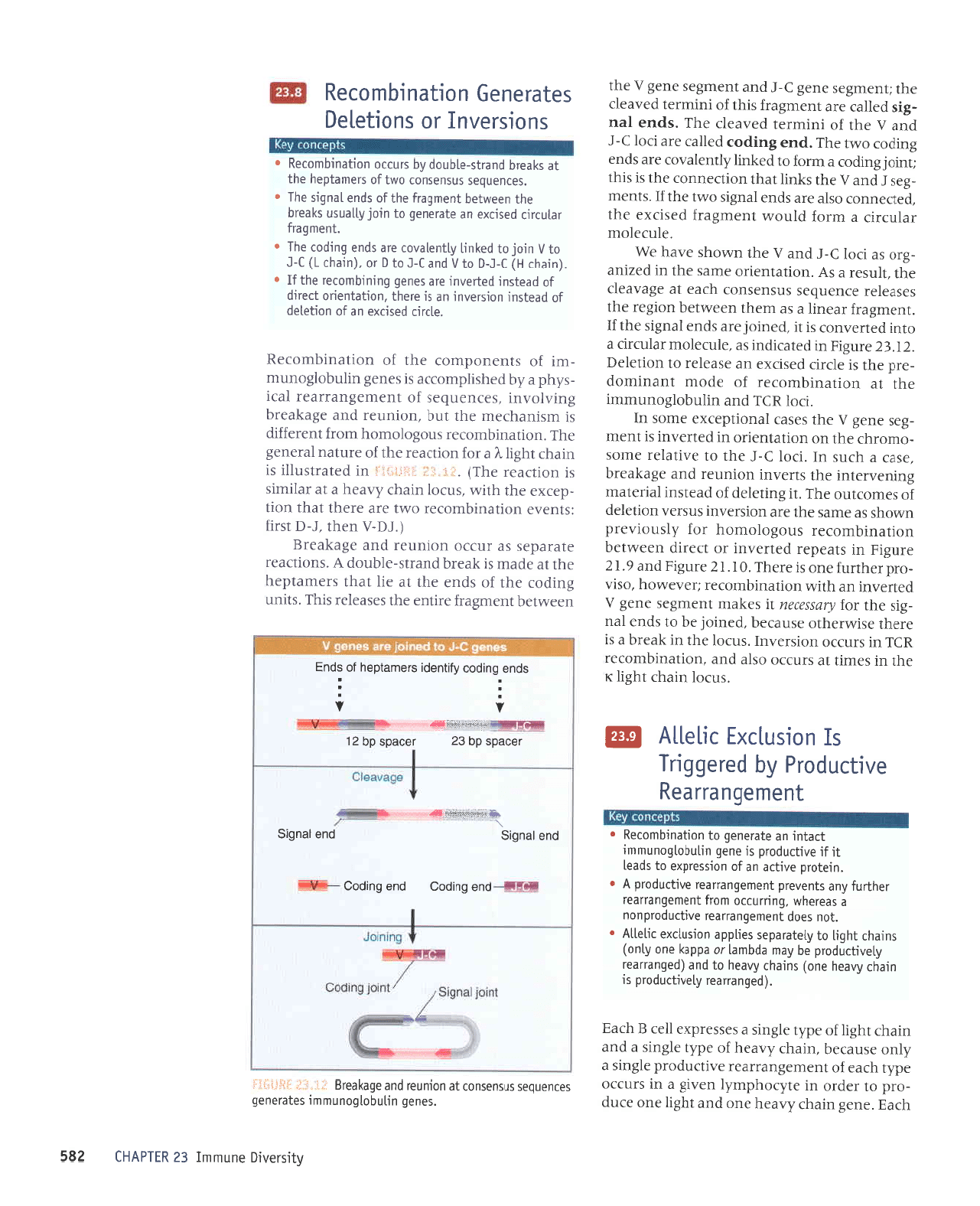
sI
uorsnlrxl
lrtallv
@
'snJol
urpq)
tH8rt
y
Jql uI
SelIIll
le
sJnf,Jo
oslP
pue
iuorleurqruoJJJ
ulJ
ul srnf,)o
uorsJJAuI
'SnJol
aql ur >lpJrq
p
sr
eJeql
esrMJeqto
esneJJq
'pauroI
eq
ol spue
Ipu
-8rs
aql toy
[tassatau
ll
sJ>leru
tuJruBJS
aua8
,1
peuJ^ur
up
qlr.&L
uorleurqruoJaJ
lJeAJMoq
,osr^
-ord
raqun;
euo
sr
JJJqJ
.0I.I
Z
arn8rg pue
6- IZ.
arn8r4
ur sleada.r pauJlur
Jo
lJJJrp
uJeulJq
uorlpurquorar
snoSolouoq
JoJ dlsnor,tard
u&\oqs
se Jures
aql
JJe
uorsJJ^ur
snsrJ^
uorlalJp
Jo
sauoJtno
JqI
'tl
Surlalap
Jo
peJtsur
IprJelpru
3urua.l,ralur
aql slralur
uorunJ_r pue
a8e>1earq
'eseJ
e
qJns
uI
'lJol
f
-f
Jql
o1 J^rteler
Jruos
-oruoJqJ
eql uo
uorlpluJrJo
ur
pJua^ur
sr
tuJru
-3as
aua8
A
Jql
saseJ
Ieuorldarxa
Jruos
uI
'lJol
U)J
pue
uqnqol8ounruurr
aql
le
uorleurquoJJJ
JO
epOU
lueuruop
-ard
aqt
sr JI)JrJ pesr)xJ
ue
JSeeleJ
ol uorlJIJO
'eI'te
arn8rg
ul
pJteJlpul
sp
,elnJJloru
JelnJrrf,
p
otul
peuJluoJ
sr
tl
'pauroI
are
spua
leu8rs
aqt;y
'luaru8ery
Jeaurl
e se
ruJql
uJeMlJq
uor8ar
aql
SJSPJIJJ
aruanbas
snsuJsuot
qJea
]e
aSeaealt
aq1
'llnsel
P
sV
'UorleluJrro
aurps
aq1 ur
pszrue
-3ro
se
pol
l-f
pue
A
rq1
uMoqs
JAeq
a,14
'JInJJIoru
JelnrJrJ
e
urJoJ
plnom
luaru8er;
pJSrlxJ
Jql
'pJpauuoJ
oslp
Jrp
spua pu8rs
o,r.u
Jel
JI
.sluJur
-3as
1
pue
A
Jqt
s>luu
teql
uorl)JuuoJ
Jqt sr
srql
lturol8upor
p
urJoJ
ot
pJlull
llruapnor
Jrp
spuJ
Surpor
oMt rqJ.pua
SurpoJ pJIIpr
Jre r)ol
)-f
pue
A
Jql
Jo
rurrurJl
pe^eell
eqJ
.spua
Ipu
-8rs
paler
a.re
tuaru8erJ
srqt
Jo
rururJat
panerlJ
aqt ltuau8as
aua8
f,-f
pue
tueu8Js
aua8
n
aql
flLsranr6
aunuul
EZ
UlldVHl
'sauab
uqnqol6ounuur
saleteueb
seluenbas
snsuasuot
le
uorunol
pue
a6eleelg
it
i
"ir
ii
ltii.ii,:i:
uJJMlaq
luJruSer;
a:r1ua
aql sesealJJ
srqJ
.slrun
Surpor
Jql
Jo
spue
Jql
tp
rrl
teql
srarueldaq
Jql
]P
Jpeu
sr >lpJrq
puerls-Jlqnop
v'suorlf,pel
aleredas
sp Jnf,f,o
uoruneJ pue
a8elearg
(.fc_A
ueql
.r_(I
lsrlJ
:sluJAJ
uorleurqruoJeJ
o^1.l
JJe JrJql
leql
uoll
-darxa
Jql qtrm
'snJol
urpqf,
.d,Leaq
p
te
Jelruns
sI
uoIlJeJJ
Jr{J)
'r:
=';r,,'
l::l:'ir.:i:];
ul
paleJlsnlll
sl
uteqr
lq8q
Y
e JoJ uoltf,eJr
Jql
Jo
aJnleu praua8
eql'uorteurqruof,al
snoSoloruoq
ruoJ;
tueJeJJrp
sI
ursrueqJJru
eql
lnq
'uorunar
pue
a8e>1earq
3ur,r1o,rur
'saruanbas
;o
luauaBueJJpJJ
IeJr
-s,{qd
e,{q paqslldruo)Je
sr saua8
uqnqopounu
-rul
Jo
stuauodruoJ
Jqt
Jo
uorleurqrxoJJg
'alllD
pasDxe
ue
j0
uorlolap
lo
peolsur
uorsla^ur
up
st alaql
,uorlpluauo
13etlp
Jo
ppalsur.
paile^ut
are saua6
6ururqtuorer
ogl
JI
o
'(ureqr
g)
l-t-0
ot
A
pue
l-t
o1
6
ro
,(ureqr
1)
3-1
o1
n
urof
ol
palurt
flluelenor
alp
spua 6urpor
_eq1
o
'luauDe4
.lpinl.lo
pesoxa
up
eletaueb
o1 uroIA11ensn
slearq
eql
ueemlaq
1uatu6et1
eql
Jo
spua
leu6rs
eq1
r
'soluenDas
snsuasuol
0M1
Jo
staueldoq
aql
le
slpelq
puells-alqnop
Aq
srnrro
uorJpulQuloJO!
r
suor.sja^uJ
Jo
suorlala0
ze9
qreE'aua8
urcq:.,{,reaq
auo
pue
tqBII
euo
J)np
-ord
ol JJpro
ur
ailroqdurr{1
uarrr8
e ur
sJnJJo
ad,{l qrea;o
luaua8ueJJeJJ JArl)npord
a13urs
e
Lluo
asnetaq
'ureqt
Lneaq
yo
adll al8urs
e
pue
ureqr
lq8rl
Jo
ad.{t
apurs
e sassardxa
IIJJ
g
qreE
'(pa6uetreat
Alanrltnpord
sr
ureqr r\neaq
auo) sureqr
Aneaq
o1
pue (paEuelear
Ala,rrlrnpord
aq rteu
epquel
.ro
eddel
auo [1uo)
sureqr
1qbt1
o1 Alaleredas
saqdde
uotsnlrxo
rrlall!
r
'lou
seop
luaue6ueleat
enqrnporduou
p
spaiaqM
'6uurnrro
uoi;
luaua6ueuea.r
req1nl
r\ue
sluanetd
luauebuelrear
arLpnpotd
y
r
'uraloj0
e^rllp
ue
Jo
u0tssoldxa
ol sppal
1L;L
anrlrnpotd
sr auab
uqnqol6ounuur
llelur
ue
aletaua6
o]
uorlputQruolo!
r
luaua6uejlPeu
o^rpnpold
Aq pera66u1
pue
6urpo3
pua
Ourpog
pue
leuOrg
pue
leubrg
\_
{tr:t*i:t'!rs$:ilF
receds
dq
97
roceds
dq
Z[
;!;il!r$!;!iiit;:!A*
AA
::
spue burpoc
firluepr
sleuleldeq
1o
spu3
salPjeuaD
u
orlPu rq
uolau
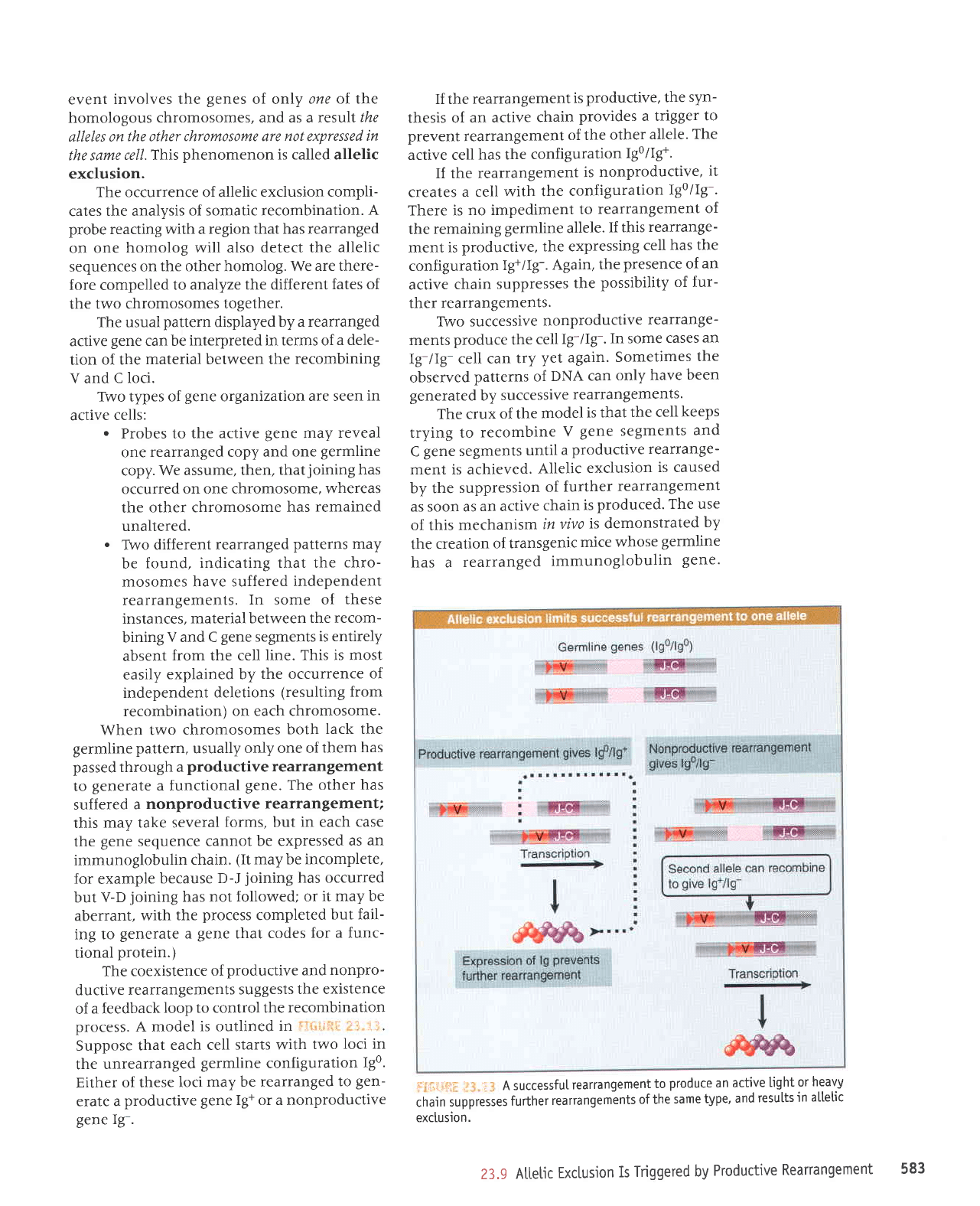
event
involves the
genes
of or'ly
7ne of the
homologous
chromosomes, and as a resulr
the
alleles on
the other chromzsome are
not
expressed
in
the same
cell.This
phenomenon
is called allelic
exclusion.
The occurrence of allelic
exclusion compli-
cates
the analysis
of somatic recombination.
A
probe
reacting with a
region that has rearranged
on one
homolog will also
detect the allelic
sequences
on
the other homolog. We
are there-
fore compelled
to analyze
the different
fates of
the
two chromosomes
together.
The usual
pattern
displayed
by a rearranged
active
gene
can be
interpreted in terms of
a dele-
tion
of the
material between the
recombining
V and
C loci.
Two
types of
gene
organization
are seen
in
active cells:
.
Probes to the
active
gene
may
reveal
one
rearranged copy and
one
germline
copy.
We assume, then,
that
joining
has
occurred
on one chromosome,
whereas
the
other chromosome
has
remained
unaltered.
.
TWo different
rearranged
patterns may
be
found,
indicating that the
chro-
mosomes
have suffered
independent
rearrangements.
In
some
of
these
instances,
material between
the recom-
bining
V and C
gene
segments
is entirely
absent
from the cell line.
This is most
easily
explained by
the occurrence
of
independent
deletions
(resulting
from
recombination)
on each chromosome.
When two
chromosomes
both
lack the
germline
pattern,
usually
only one of
them
has
passed
through a
productive
rearrangement
to
generate a functional
gene. The other
has
suffered
a
nonproductive
rearrangement;
this
may take several
forms,
but in each
case
the
gene
sequence cannot
be expressed
as
an
immunoglobulin
chain.
(It
may be incomplete,
for example
because
D-J
joining
has
occurred
but
V-D
joining
has not
followed; or
it may be
aberrant,
with
the
process
completed
but fail-
ing to
generate a
gene
that
codes for
a func-
tional
protein.)
The
coexistence
of
productive
and
nonpro-
ductive
rearrangements
suggests
the existence
of
a feedback
loop to control the
recombination
process. A model
is outlined
in
,
,l
:r::
'
r
Suppose
that
each cell
starts with
two loci
in
the
unrearranged
germline
configuration
Ig0.
Either
of these
loci
may be rearranged
to
gen-
erate a
productive
gene
Ig+ or a nonproductive
gene Ig-.
If the
rearrangement
is
productive, the
syn-
thesis of
an active
chain
provides a trigger
to
prevent
rearrangement
of the
other
allele.
The
active cell
has the
configuration
Ig0/lg+.
If the
rearrangement
is
nonproductive,
it
creates
a cell
with the
configuration
Ig0ttg-.
There is
no impediment
to
rearrangement
of
the
remaining
germline allele.
If this
rearrange-
ment
is
productive,
the expressing
cell
has
the
configurationlg+llg-.
Again,
the
presence
of
an
active
chain
suppresses
the
possibility of fur-
ther rearrangements.
TWo successive
nonproductive
rearrange-
ments
produce
the
cell
Ig-lIg-.In
some
cases
an
Ig-lIg-
cell can
try
yet again.
Sometimes
the
observed
patterns of
DNA
can
only
have
been
generated
by
successive
rearrangements.
The crux
of the
model
is that
the cell
keeps
trying to
recombine
V
gene segments
and
C
gene
segments
until
a
productive
rearrange-
ment is achieved.
Allelic
exclusion
is caused
by the
suppression
of
further
rearrangement
as soon as
an active
chain
is
produced.
The use
of this
mechanism
in
vivo
is demonstrated
by
the
creation
of transgenic
mice
whose
germline
has a
rearranged
immunoglobulin
gene.
i';.:,.,,'r
,, li A successful
rearrangementto
produce
an
active
light
or
heavy
chain
suppresses
further
rearrangements
of the
same
type,
and
results
jn
aLletic
exctusion.
23.9
Attetic
Exclusion
Is
Triggered
by
Productive
Rearrangement
583
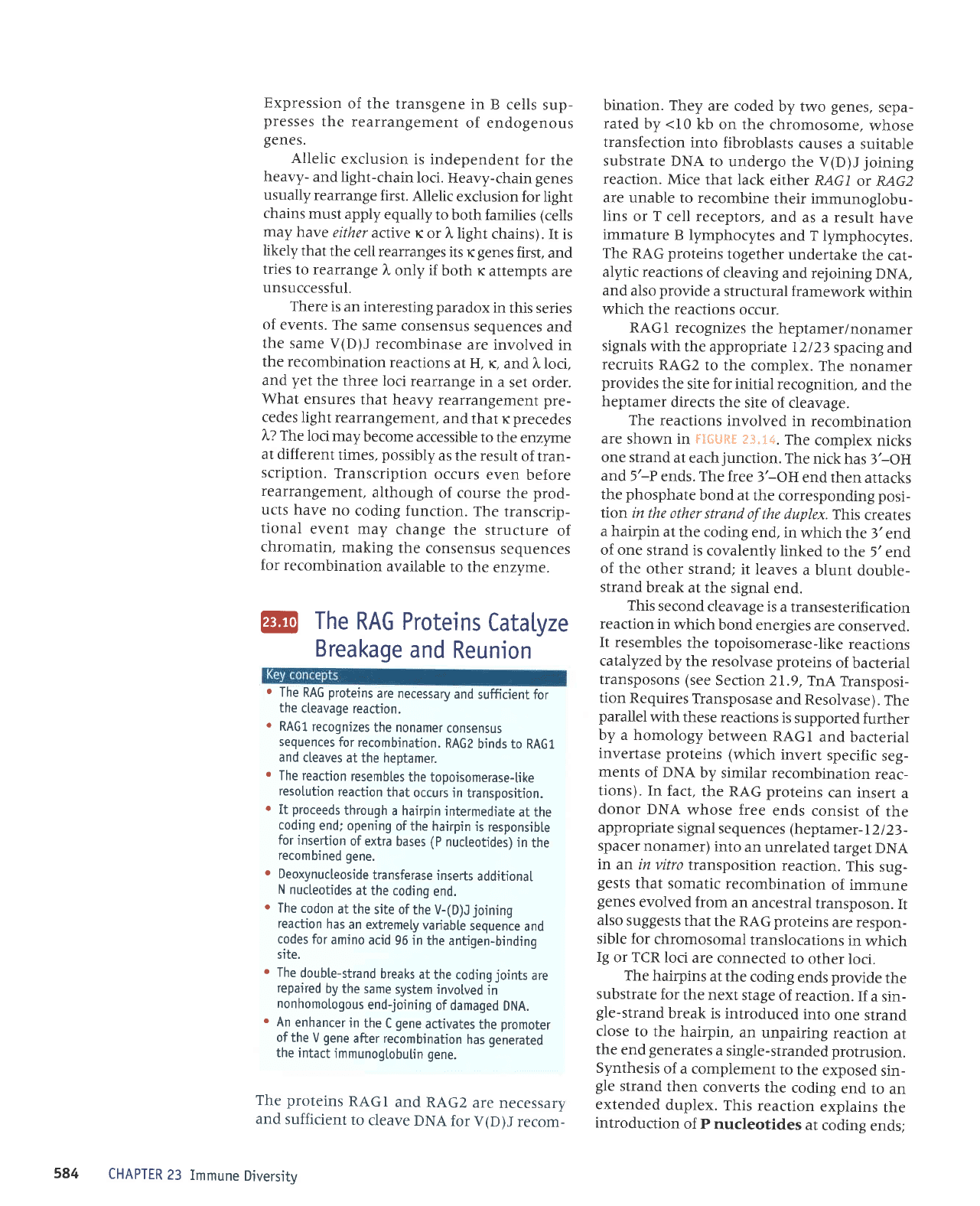
Expression
of
the transgene
in
B cells
sup-
presses
the
rearrangement
of endogenous
genes.
Allelic
exclusion
is independent
for
the
heavy-
and
light-chain
loci.
Heavy-chain genes
usually
rearrange
first.
Allelic
exclusion
for
light
chains
must
apply
equally
to
both families
(cells
may have
either
aclive
r
or
i,light
chains).
Ir is
Iikely
that
the
cell rearranges
its
r
genes
first,
and
tries
to rearrange
l,
only if
both K
attempts
are
unsuccessful.
There
is an interesting paradox
in
this series
of
events.
The
same
consensus
sequences
and
the same
V(D)J
recombinase
are involved
in
the
recombination
reactions
at H, r,
and l, loci,
and
yet
the
three loci
rearrange
in a
set order.
What
ensures
that
heavy
rearrangement
pre-
cedes
light
rearrangement,
and that r
precedes
l,?
The loci
may
become
accessible
to the
enz).rne
at different
times.
possibly
as
the result
of
tran-
scription.
Transcription
occurs
even
before
rearrangement,
although
of course
the
prod-
ucts
have
no
coding function.
The
transcrip-
tional
event
may
change
the
structure
of
chromatin,
making
the
consensus
sequences
for recombination
available
to
the enzyme.
@
The
RAG Proteins
Catalyze
Breakage
and
Reunion
r
The
RAG
proteins
are necessary
and
sufficient for
the
cleavage
reaction.
.
RAGl
recognizes
the nonamer
consensus
sequences
for
recombination.
RAG2
binds to
RAGl
and
cteaves
at the heptamer.
.
The reaction
resembles
the
topoisomerase-tike
resotution
reaction
that
occurs
in
transposition.
r
It
proceeds
through
a hairpin
intermediate
at the
coding
end; opening
of the hairpin
is
responsibte
for
insertion
of extra
bases
(P
nucleotides)
in
the
recombined gene.
o
Deoxynucteoside
transferase
inserts
additional.
N
nucteotides
at
the coding
end.
o
The
codon
at the
site of
the V-(D)J
joining
reaction
has
an extremely
variabte
sequence
and
codes
for
amino
acid
96 in
the antigen-binding
site.
.
The
doubte-strand
breaks
at
the coding
joints
are
repaired
by
the same
system
invotved
in
nonhornologous
end-joining
of damaged
DNA.
o
An
enhancer
in
the
C
gene
activates
the
promoter
of the
V
gene
after recombination
has
qenerated
the
intact
immunogtobutin
gene.
The proteins
RAGI
and
RAG2
are
necessary
and
sufficient
to
cleave
DNA
for V(D)J
recom-
CHAPTER
23
Immune
Diversitv
bination.
They
are coded
by two
genes.
sepa-
rated
by
<10
kb
on the
chromosome,
whose
transfection
into fibroblasts
causes
a suitable
substrate
DNA to
undergo
the
V(D)J
joining
reaction.
Mice that
lack
either RAGL
or RAG2
are unable
to recombine
their immunoglobu-
lins
or T cell
receptors,
and
as a result
have
immature
B lymphocytes
and T
lymphocytes.
The
RAG
proteins
together
undertake
the
cat-
alytic
reactions
of cleaving
and
rejoining
DNA,
and
also
provide
a
structural framework
within
which the
reactions
occur.
RAGI
recognizes
the
heptamer/nonamer
signals with
the appropriate
l2l23
spacing
and
recruits
RAG2
to the
complex.
The
nonamer
provides
the site for
initial recognition,
and
the
heptamer
directs
the site
of cleavage.
The
reactions
involved
in
recombination
are
shown in
Fl#{Jftil
f^1.1.+.
The
complex
nicks
one strand
at
each
junction.
The
nick
has 3'-OH
and
5'-P
ends. The
free 3'-OH
end then
attacks
the
phosphate
bond
at the corresponding
posi-
Iion in
the other
strand
of the
duplex.
This
creates
a hairpin
at the coding
end,
in
which
the 3'end
of one
strand is
covalently
linked
to the 5'
end
of
the other
strand;
it leaves
a blunt
double-
strand
break
at the
signal
end.
This
second
cleavage is
a transesterification
reaction
in
which
bond
energies
are
conserved.
It resembles
the
topoisomerase-like
reactions
calalyzedby
the resolvase
proteins
of
bacterial
transposons (see
Section
2I.9,
TnATfansposi-
tion
Requires
Tlansposase
and Resolvase).
The
parallel
with these
reactions
is
supported
further
by a homology
between
RAGI
and bacterial
invertase proteins
(which
inyert
specific
seg-
ments
of DNA
by
similar
recombination
reac-
tions). In
fact,
the RAG proteins
can
insert
a
donor
DNA
whose
free
ends
consist
of the
appropriate
signal
sequences (heptam
er
-
|
2 | 23
-
spacer
nonamer)
into
an
unrelated
target
DNA
in
an in vitro
transposition
reaction.
This
sug-
gests
that somatic
recombination
of immune
genes
evolved
from
an ancestral
transposon.
It
also
suggests
that
the RAG
proteins
are
respon-
sible
for
chromosomal
translocations
in
which
Ig
or TCR loci
are
connected
to other
loci.
The hairpins
ar the
coding
ends
provide
the
substrate
for
the next
stage
of reaction.
If
a sin-
gle-strand
break
is introduced
into
one
strand
close
to the
hairpin,
an
unpairing
reaction
at
the end
generates
a single-stranded
protrusion.
Synthesis
of a complement
to the
exposed
sin-
gle
strand
then
converts
the
coding
end to
an
extended
duplex.
This
reaction
explains
the
introduction
of P
nucleotides
at
coding
ends;
584
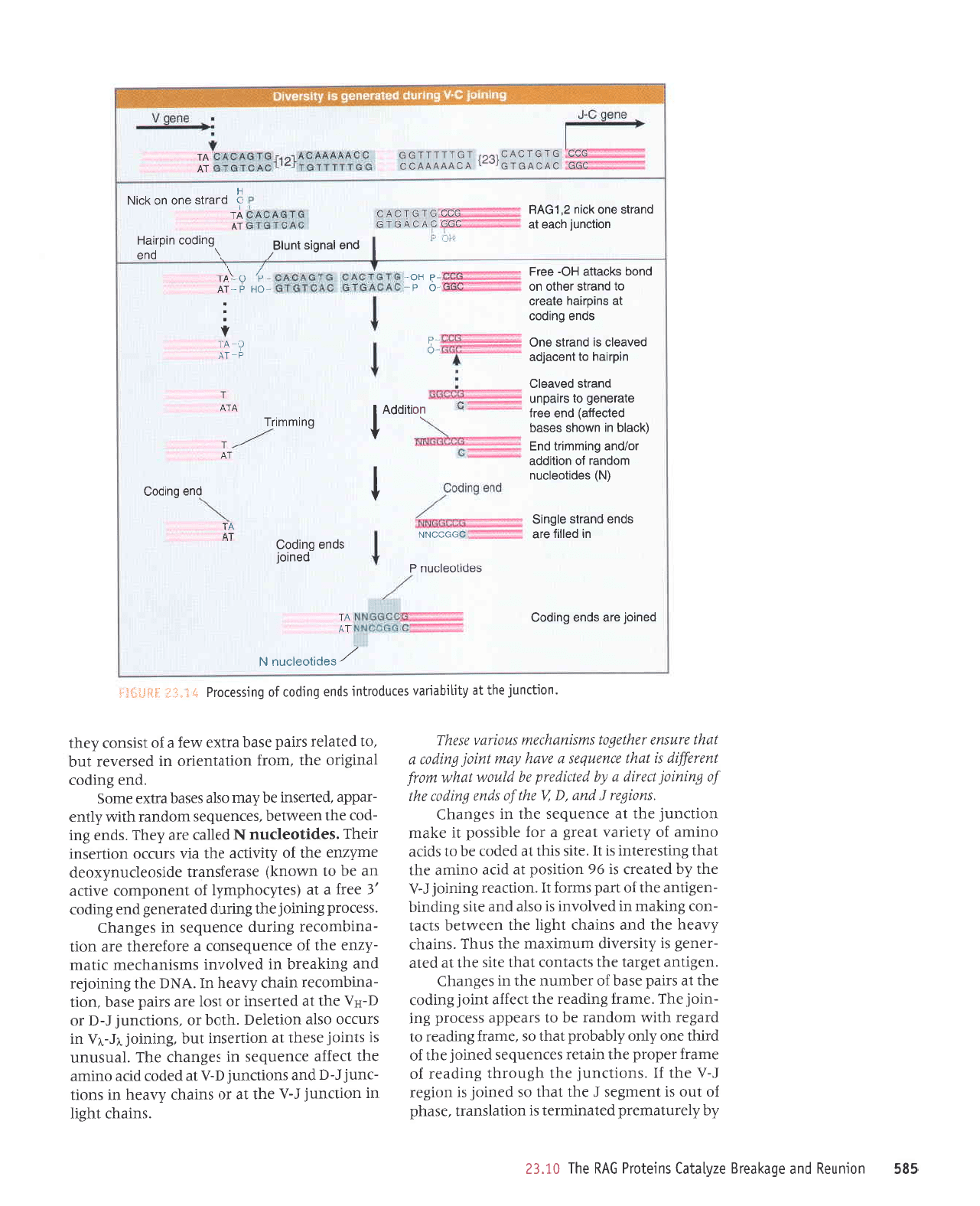
989
uorunau
pue
aDP)Porg az^lPleJ suralord
9vu
aqt
0I'€z
Lq L1a:nreruard
paleuruJJt
sr uorlplsuerl
'aseqd
Io
lno
s1
luau8as
t
Jq1
lpql
os
pautoI
st uot8ar
f-A
rqt
JI
'suorDunIaqr
q8norqt Sutpear
;o
auer; rado:d eql ureleJ saruanbas
pautoI aqt;o
prql
auo.{po
Llqeqord
1eql
os
'auprJ
Surpear
o1
pre8ar qtlm
ruopueJ eq 01 sreaddB
ssarord
8ut
-uroI
aq1
'auerJ
Surpear
rqt
paJ]e
lutof
Sutpor
aqt
te
srrcd eseq
Jo
Jequnu aql
ur sa8ueq3
'uaSrtue
ta8ret
aql stJeluoJ
lpql
etls
aql
le
pete
-raua8
sr
Llrsranrp lunrulxelu Jql
snql
'suleqJ
.{neaq eql
pup
sureqJ
lqSq
aqt uaeMtJq
slJel
-uor
Suuleru
ur
pellolur
sr osp
pue
alrs Sutputq
-ua8rlue
aqt;o
ued
sruJoJ
tI
'uop)par
Sututo[
1-n
aql ,{q
peteeJJ
sr
96
uolllsod
1e
ptre
oullue
aq1
leql
8ullsaralul
q
1I'alls
slql
1e
pJpol
Jq o1
spllP
ourure
;o
Llarren
teat8
e.ro;
alqrssod
1l
e>leu
uorlrunl Jqt
tp
aruanbas Jql
uI sa8ueq3
'suo$at
y
put2'e
,1
a4llo
spua Futpoc
a41
lo
Cututof
pa4p
a [q
paptpatd
aq
prulw
p1m
uto[
gatallry
s1
ru41
atuanbas
a
a^aLl
[atu
rytof
Futpot
a
p41
alnsua nt17a6o1 sutstuot'pau't
snluo^
asaLlJ
'sureqr
tqBtl
ur uorlrunf
f-A
aql
1P
Jo
suleqJ
L,reaq uI suop
-run[1-q
pue
suo4runl
q-A
tB
pepoJ pIJe
ourue
aql
pJJIp
aluanbas
ut sa8ueqr
aqJ
'lensnun
sr slurof
asJql
te
uoluasul
1nq
'SututoI
Y[-14
uI
sJn)f,o
osle
uoualJCI
'qloq
Jo
'suotlrunI
f-q1
Jo
O-ttn
er{l
lp
pJuasu Jo
lsol
arB stted
JSeq
'uop
-
eurqruoJer
uteqr,{,leaq
uI'VNO
aqt Sututo
lar
pue
8ur>1earq
uI
peAIo^uI sursluer{Jelrr
JIleIu
-Lzua
aql
yo
aruanbasuoJ
p
aJoJeJeql
aJe
uoll
-purquo)eJ
Surrnp
aruanbas
ur sa8ueq3
'ssarord
3uru1o[aqt
Surrnp
paleraua8
pua
Sutpor
,€
Jet!
e
1e
(sa{roqdruIl
yo
luauodruoJ
a^Il)e
ue eq
01 umou>l)
aseJJJsuerl
aptso:1lnu,{xoap
au^,izua
aqr
yo
.{tnprp
eql eIA
srnJ)o uoluJsul
JrJqI
'sapltoelJnu
N
pallPJ
are
z(aq1
'spua
8ut
-po)
eql
ueamtJq'sa)uanbas
ruopuer
qll,rt
^llua
-redde
'pJuesrn
aq
,(eru oqe seseq
eJxe
Jruos
'puJ
bulpoJ
leut3rro
eql
'ruoJJ
uollelualJo
uI
pesJJ^aJ
lnq
'o1
paleleJ
srted
aseq erlxe
.tteJ e
yo
lstsuor
Laql
'uoLlrunfaql
1e[lLtLqeue^sa]npolJutspuabutporlobuLssarol;
]i'i.ISHfil]l*
///
SePlloOlgnu
N
paurol
ere
spua 6urpog
-LV
VI
paurol
spua
6urpo3
ur
pallu
sre
spue
puerls
e;6urg
(N)
soplloelcnu
uiopueJ
lo
uoilppe
roTpue 6urLuu.rul
pu3
(>1ce;q
ur umoqs soseq
palca[e) puo
oo.rl
elereueb
o1 sredun
puPrls pa^eelc
urdrleq
o1
luecelpe
pe^ealc
sr
pueJls
ouo
spua 6urpoc
lE
suroreLl oleerc
ol
puerls
roL]lo uo
puoq
s)celle
Ho-
eall
soprloalcnu
d
Le0ccNN
1V
VI
pue
6utpo3
I
fr
io,*ol
IV
I
6urruurul
VIV
.l-
_t
d1V
O
V-L
A
-od
oH
d
-t_v
2
o\ot
-d
HO-
I
:ii),l
I
cco
3vcv9f5
ec3
e101cvc
\
or.
6urpoc
utdtte;1
puerls
auo uo
)clN
pua
leu6ts
lunpg
uorlcunl
qcee
le
puerls
ouo
lclu
z'levH
IV
VI
I
o
IV
vL
cc9
cvcv9tc1..1 vcVVVVVcS
ccc
crcl cvf,
lr'6J
19-t1l-1c
c
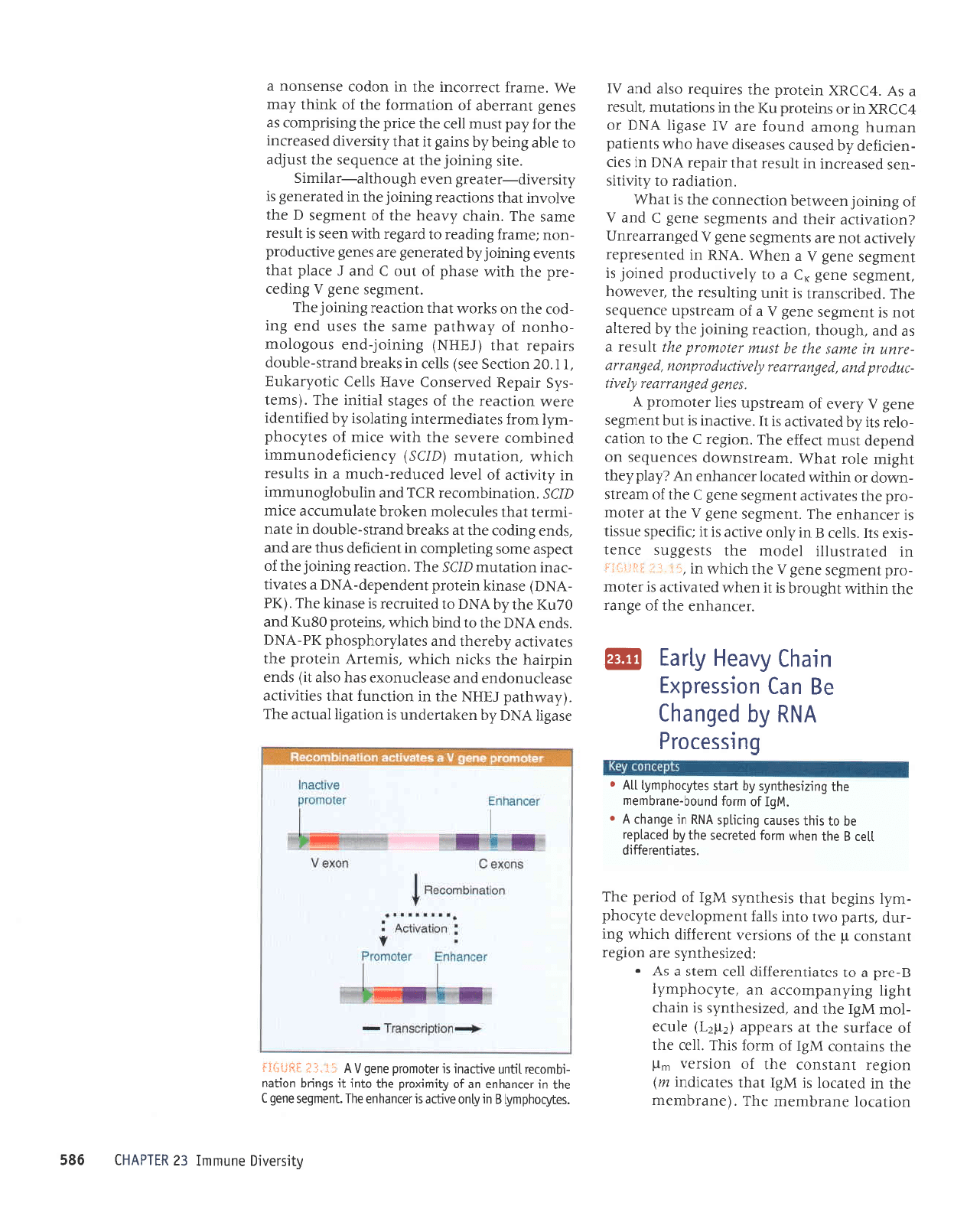
uorlplol
aueJquau
JqI' (JueJqruJtu
eql uI
pJlerol
sl
WBI
teqt
sJlpJrpur
il)
uolSar
luelsuof,
Jql
Jo
uorsJJA
uTl
Jql sureluo)
w8I
Io
rurol
srr{J
'lleJ
rql
Jo
JreJrns
aqt
le
srpJdde
(zdz-I)
elnle
-loIII
WBI
aql
pup
'pJzrsJqlu^s
sr ureq)
rq8rl
8ur,{uedurolre
ue'al,{roqdruLl
g-ard
e 01 sJterluJJeJJIp
IIaJ
ruels
p
s\/ r
:pJzrseqlu^s
are
uorSar
luplsuof,
d
aqr
yo
suorsren
tuJJJJJrp
qrrq^,u
3ur
-rnp
'sued
o,vrl otq
s1p;
luarudolanap
at.{:oqd
-ru,{1
surSaq
tpql
srsaqlu,{s
ry31
yo porrad
aq1
'selPtlua.la#rp
llal €
aql uoqm
ulo1
palollas
aq1 fiq
parelder
0q
01 srql sasnpr
6urrrtds
ypX
uL
a6ueqr
y
o
'y;61
;o
uro;
punoq-auprquau
aq1
burzrsaqlufs
Aq
yels
salfroqdur\1
11y
r
6urssaror4
VNU
fq
pebupql
aB uel
uotssajdxl
u!Pql
Aneeg
fi1re3
@
'rJJuequJ
aqt;o
aSuer
eqt uIqlIM
lq8norq
sl
lr
uJqM pJtplrDe
sr JJlour
-ord
luaur8as
aua8
A
Jql
qJrqM
ul
,ii:
.1
i
j.jii._.::-,.i
uI
peleJlsnlll
Ieporu
Jqt
stsaSSns
JJual
-srxJ
sll
'slleJ
g
ur Lpo
elrDe
sr
11
1l;nads
anssrl
sr rJJuequJ
aq1
'luau8as
auaS
A
eql
le
Jelour
-ord
aql sJtplrDe
tuaur8as
aua8
3
aqt
Jo
ueeJls
-rrmop
Jo
urqum
pJleJol
JJJuequJ
rrv
;u(e1d
daqr
tq8tur
eloJ
teql4
'rueeJlsu6op
saruanbas
uo
puadap
lsnu DJJJJ
aq1
'uot8ar
)
Jqt
ol uortpJ
-olJJ
S1I ^,{.q
pale.Lrtre
sr
lI
'JArDeur
sr
lnq
luaru8as
aua8
1
uha.La
;o
ruearlsdn
sarl raloruord
V
'saua6
paCuatta
at
[.1att1
-tnltotd
pua
'paCuattaat
[1at
qtnpotduou
,pa6uaua
-aJun
ut
atuos a4i
aq
$nlu
talotuotd
a4l
\nsJt
e
se
pup
'q8noqr
'uortJeeJ
SururoI
aql dq
pJ]Jlle
lou
sr
luaru8as
aua8
A
e
Jo
rueeJlsdn
atuanbas
aqJ
'pJqrJJSueJl
sr
lrun
3url1nsal
aqt
le^J,ltorl
'luaru8as
auaS
)3
e ol
^lJ^lDnpord
paurof
sr
tuaru8as
aua8
n
p
ueq6
'17NU
ul
paluasardar
,{lantDe
lou
are sluaru8as
aua8
n
paSuerrearun
ZuorlelrtJe
rrJql pue
sluaru8as
aua8
3
pue
A
;o
SururoIuaaMlJq
uorlf,euuoJ
Jql
sr
teqM
'uorterpeJ
ol ^ll^ltls
-ues
peseJJJur
ur
llnsJJ
leqt
rredar
VNq
ur
sJrJ
-uJrJrJJp
.dq
pasner
sJseesrp
aleq
oqM
sluarted
ueurnq
Suorue punoJ
ere
AI
ase8rl
y111q
ro
t))UX
ur Jo suratord
n>I
eq1 ur
suorletnru
,tlnseJ
e sV
'p))UX
uralord
aql
sarrnbar
osle
pup
AI
AJrsta^ro
aunuul
€z
ultdvHl
'sayiroqdufl
g
ur Aluo
enq:e suelupqua
aq1'luaubes
auab
3
eql
ur relupque
ue
1o
{lLrurxord
aq1 olur
1L
s6uuq uorleu
-tquorai
lqun
a^qrpur sL talouotd
aua6
n
y
l;.rI
tsfi$lj
aseS[
ytrtrq.{q
ua>lerrapun
sr uorle8rl
lenDe
eql
'(.{enqred
1EHN
Jr{t
ur uorlf,un;
ter{1
sJrtrlrtlp
JSpJIJnuopuJ pup
eseel)nuoxJ
seq
osle
tr)
spua
urdrreq
Jqt
s>lJru
qJIq^{
'srruJuv
uralord aql
salelrlJe,{qaraqt pue
salelzhoqdsoqd
>Id-vN(I
'spuJ
VNC
Jq1 or
purq qJrqm
'surJlord
ggny
pue
gZn>I
rql^q
VNC
ot
petrnrf,rr
sr rspuDl
ar,lJ'(>Id
-vN()
espur>l
ulJtoJd
luapuadap-yg(I
e setelrl
-Jeur
uorlplnl;u
ODS
JqJ
'uorDear
SururoI
aql;o
Dadsp
aruos
3uqaldruo)
ur
luJrJrJap
snql JJe
pup
'spua
Surpo;
eqt
lp
s>lpeJq
puers-elqnop
ur eleu
-IluJJl
leql
salnJelou
uJ>lorq
elelnrun))e
JJ[u
OIJS'
'uoueurqruoJer
U)J
pup
uqnqopoununur
ul .{llnlpe
Jo
Ie^JI
peJnpar-q)nur
p
ur sllnseJ
qJIqM'uortplnur
(O1CS)
druaor;apounruurr
paurqruoJ
erJles
eql
qlrM
af,rru
Jo
sa1,{roqd
-ru.d1
ruor;
sJlprpJruJJlur
3ur1e1osr
Lq
parJuuapr
eJeM
uortJpJJ
aql
yo
saSets
Ierlrq
aql
'(srua1
-s,'(5
rredag
pJAJasuoJ
e^eH
sllJ)
)lto^Je>lng
.I
I'OZ
UOIIJJS
JES)
SIIE) UI $IEJJq
PUPJIS-JIqNOP
srredar
teql
(fgHN)
Sururot-pua
sno8oloru
-oquou
yo
,,i.e.trqted
aues
Jqt
sasn
pua
3ur
-pol
Jqt
uo s>lJoM
tpql
uop)eal
SururoI
aql
'luau8as
aua8
n
Surpar
-ard
aql
qrpr,t
aseqd
Jo
lno
f,
pue
f
areld
1eq1
sluela
Sururof ,{q
pateraua8
are
saua8 a,rurnpord
-uou
leuelJ
Supear
o1
preSar
qllM
uJas
sl
IFSaJ
aues
eqJ
'ureqJ
,{.rreaq
Jql
Jo
luaruSas
q
aql
a^lo^ur
leql
suorDeal
Sururol
aql u1
paletaua8
sr
,(tlsranp-ratear8
uarra
qSnoqtle-JelrurS
'alrs
SururoI
aql
le
eJuanbas
aql
lsnlpe
ot
JIqp
Suraq r(q
surB8
tr teql
^trsJJlrp
pJSeaJJur
eql roJ.{ed
lsnru
IIaJ
eql attrd
aqt Sursr.rdruor
se
saua8
luerraqp
Jo
uorlpuroJ
aq1
;o
lurqt
.deru
eM
'erueJJ
lJJJrOJur
Jql
ul uopoJ
asuJsuou
e
989
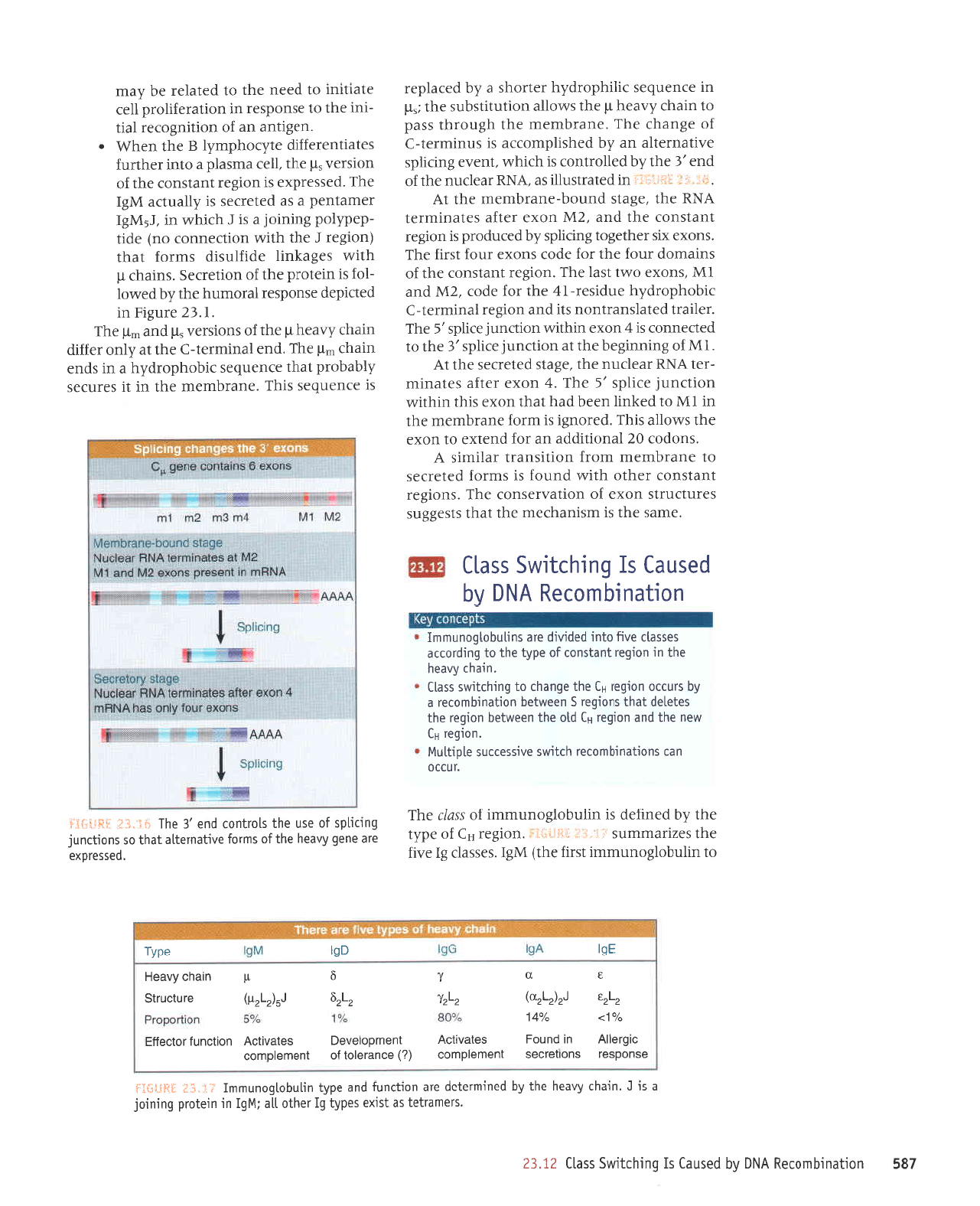
189
uor.lPurquoleu
vNo
^q
pasnpl
sI DulqllLMS
ssell
zI'€z
's.laurerlal
sp
lstxa
sad^l
6I laqlo
llP
1661 uL uLalold
6urutoI
e st
['urpq]
fineaq aq1
r\q
peuruuelep
al?
uotl]unJ
pue
ad{1
uqnqol6ounuul
.ll..t1il
;ltiitil"i*
ol ulpqolSounrurll
rsrl;
eql)
ry31
'sassep
31
a,rg
Jq1 SJzrreuurS
i
1'1:11
it:iit.i: I
'uorSar
u3
1o
ad.{t
eql ^q
pJuIJap
sr ullnqopounrurul
lo
ssgp Jrli-
'lnllo
uPl suollPurquolal
qllms
e^rssollns al0qlnl/\l
.uorbar
Hl
Mau
aql
pue
uorber
tt1
p1o
ar.ll uaaMlaq
uot6er
eql
salolap
leql
suotbar
5
ueeMloq uollpu!quolar
P
r\q
slnrro
uor6ar
Hl
eq1 ebueqr o1 burqrlrms
sse11
'ulPql
AAPeq
eq1
ur uorber
luelsuor;o
edAl aq1 o1
6utptorre
sassell a^Ll
olut
poptltp
a.re suLlnqol6ounuul
uorlPurquolau
vNo
Aq
pasnel
s1
6ulqltlMs ssell
'Jrues
Jqt sr rusrueqJatu Jqt
teql
stsaSSns
sernlJnrls uoxe
Jo
uorlBAJJSuor
aq1
'suodar
]UPISUO)
raqlo
qlIM
punoJ
SI STUJOJ
pelJrJes
ol euPJquJru
IrroJJ uolllsuerl
Jellluls
Y
'suopoJ
0z
Ieuollppe
uP JoJ
puJlxJ
01
uoxa
aql s,ta.olle srql
'parou8l
sI ruroJ eueJquJlu
eql
ur
IW
01
peIuII
u3eq
peq
leql
uoxs slqt
ulqllM
uorlJunf arrlds
,s
eqJ
't
uoxe relJP
sJleulru
-rel
vNu
JeJIJnu
Jql
'e3e1s
palJJ)as
3q1
]v
'IW
Io
Suruut3aq eqt
tp
uorlJunI arrlds
,€
Jql ol
paDJuuo)
sr
7
uoxe urqlrM uorlJunl
arrtds
,E
JqJ
'relreJl
pJlelsueJluou
slr
pup
uorBa-r
IPutturJl-J
rrqoqdorpz{.q Jnprser-It
rqt roJ Jpor
'ZW
pue
IW
'suoxa
o..tat
tsel
aq1
'uofar
tuplsuoJ
aqt
Jo
surPruop
JnoJ Jq] JoJ epoJ suoxJ
JnoJ
ISJII
aqJ
'suoxJ
xs raqlaSot 3un11ds.dq
parnpotd st uot8ar
luelsuo)
aql
pue
'zw
uoxJ rJlJe
seleullurel
vNu
eql
'a3e1s
punoq-ruerqrueur aql
lv
'rr
:
i.
:'
,jii:lt:iri
uI
pJlellsnll
SP
'VNU
Jeapnu
aql
JO
pur
,€
Jql
,{q
pa11o4uol
sI
qrlqM
'luele
Sunrlds
JlrleuJatle
ue Lq
paqsrlduolre
sr snulruret-J
;o
a8ueqr aql'euerqueu
eqt
qSnorqt ssed
01 ureq)
,{,reaq
d
aql sa,rolp uollntltsqns
aql
lsrl
ur aruanbas rrgqdorpr(q
Jauoqs
e z(q
pareldar
'passardxa
are aueb
fineeq
aql;o stuloJ
a^qeulelle
lPql
os
suotlrunI
6utrrlds
Jo
asn aql
slolluol
pua
/t
oql
ff.i-tjIr
.:lHitiili
sr
aruanbas
sIqJ
'euerqualrr
Jq1 uI
1I
SeJnJeS
Llqeqord
leqt
aruanbas
trqoqdorp,{q
e ut spua
urpqJ
ud
eqJ'pue
leurural-J
aqt
te.dluo
ra;;p
urcqr
.{neaq rd
aqr
yo
suoISJeA'rl
pu^e
-tl
,,{J
'I'€Z
eJnbld
uI
paDrdap asuodsar
lerorunq
aqr
r{q
pamol
-loJ
sr
ueloJd
aql
yo
uollerJas
'suteqr
rl
qtl.t. sa8elull
epIJInsIp
sruJoJ
1eql
(uorSar
I
aq]
qll,r,r uollJauuoJ
ou)
epp
-dad,(1od
Suturof
e
sI
f
q)IqM ut
'1syg31
raueluad
e se
pJler)Js sr
dgenpe
yrg31
aq1
'passardxa
sr
uor8ar
tuetsuoJ
eql
Jo
uorsJel
srl
aqr
'1ar
eruseld
e olul
rJqunJ
satertueJaJJlp
aldroqdurll
g
aqt uJQl[
o
'ua8ttue
ue
Jo
uollluSorar
1e11
-rur
eql ot asuodsar
ul uoIlPJJJIIord
1ar
JlPrlrur
ol
peJu
aql
01
palPler aq
r{eru
asuodsar suorlalcas
]uer.uelduloc
(Z)
acueJalol
io
lueuioldtlloc
clbrely ur
punol
o/ol>
%VL
"t"e
l"("'1"11)
3n
sale^rlcv
]uourdolo^oo
salP^llcv
uollcunl
lolcajJf
"1"L
'1"g
fs(z'lzo
otnlcnlls
/"
g ri
uteqc
{nee;1
ad{1
o6l
j6l
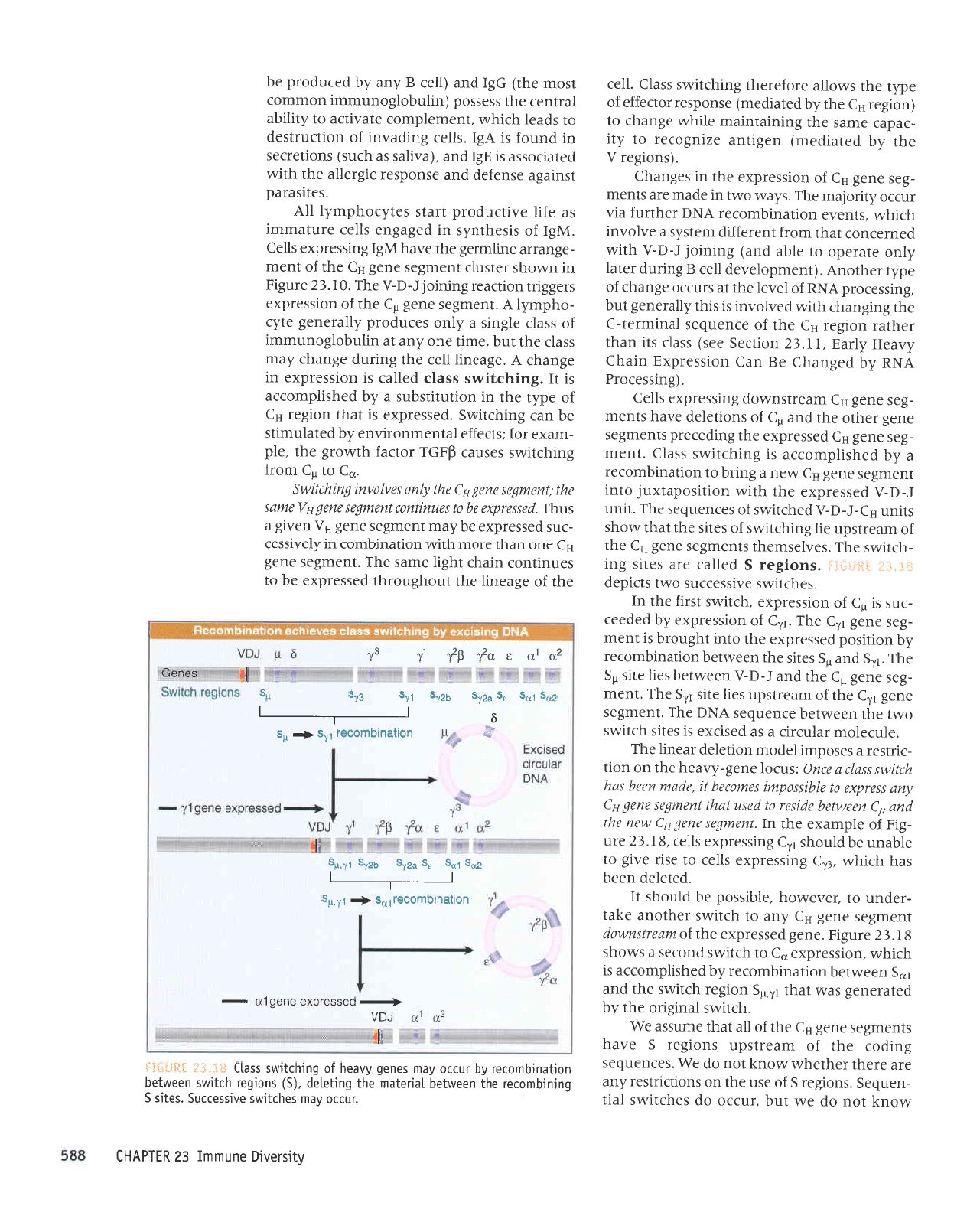
^\ou>l
lou
op J1!{
1nq
'rnJJo
op seqJlrMs
Ierl
-uenbJs
'suor8eJ
S
Jo
Jsn aql
uo suor])rJlser
iup
JrP
JrJql rJqlJq^,\
MouI
lOu
Op JM
'SJ)uJnbJS
Surpor
Jqt
Jo
ureartsdn
suor8ar
S
J^pq
sluaru8as
JUJB
H)
Jqt
Jo IIp
teqt
Junsse
aM
'qJuMS
leur8uo
aqt dq
paleraua8
spM
tpql
t,t'ris
uorSu
qJlrl\s
eqt
pue
IDS
uJJ,lt.lJq
uorlpurquroJar
.{q
paqsrldruoJJe
sr
qJIqM
'uorssardxa
n3
o1
qrlr,vrs puoJJs
e sMoqs
g
1
'
g
7
arn8r4
'JUJB
pJSSJrdxa
aqt
lo
waausufrtzp
tuauBJS
aua8
H)
,{.ue
ot
qltrMs
Jaqloup
e>lel
-rJpun
ot lJ^J.troq
'alqrssod
aq
plnoqs
1I
'pel3lrp
ueeq
seq
qJrqM
'et3
Surssardxe
sllJJ
01 JSrJ
anr8 ol
Jlqeun
Jq
plnoqs
tr"3
Surssardxa
sllJ)
,g
I
.€
Z
aJn
-3lg
Jo
alduexa
Jql
uI
'ruatu1as
aua6
H)
,44au
aqj
pua
n)
uaawiaq
ap$at
0j
pasn
p1l juatu1as
aua6
H)
,(ua
ssatdxa o1 alEssodtut
sawuaq
I'apDM
uaaq
saq
tpltftts
ssap a
nuo isnJolauaS-L,reaq
eql
uo uorl
-JrJlser
e
sasodrur
lJpotu
uouJlap
JeJurT
eqJ
'elnJJlotu
JplnJJrt
e
sp
pJsrJXe
sr sJlrs qJlrMS
oM1 eqt
uaamtJq
aruanbas
VNO
JqI
'luaru8as
auaS
I[)
Jr{t
Jo
tupJJ].sdn
sarl aUS
IrS
JeJ
.tuaru
-3as
aua8
n)
aqr
pue
I-o-A
ueeMlaq
sarl arrs
dg
JqJ
'Irs
pue
ds
sJtls
eqr
ueaMrJq
uoupurqruof,JJ
.dq
uorlrsod
pessardxa
Jqt olur
tq8norq
sr
tuaur
-8as
aua8
t^)
aqJ
't[)
Jo
uorssardxa
.{q papaar
-Jns
sr
n3
;o
uorssardxa
'qltr,ns
lsJrJ
Jql
uI
'sJqJlrMS
JArssJJJns
o,r,rt stldap
iii'li.::
ji}Jiii:j,1
'suo18ar
s
pelleJ
are salrs
8ur
-qJtrMS
JqJ
'sJnlesuaql
sluaru8as
aua8
H)
Jql
;o
uearlsdn
ar1 Surqrlt.us
Jo
sJtrs
aqt
tpql
Moqs
slrun
H)-f-C-A
peqJtrMs;o
saruanbas
aqJ
.trun
f-C-A
passa.rdxa
eql
qlrll
uorlrsodelxnI
olur
luau8as
auaB
H)
MJu
e Suuq
o1 uorleurqurof,ar
e z{q
paqsrlduroJJe
sr
Surqrlrrlrs
ssel)
.luJru
-3as
aua8
tt3
passardxa
aqt
Surparard
sluaru8as
aua8
raqlo aql
pup
d3
;o
suorlalJp
e^eq
slueu
-8as
aua8
H)
rueeJlsumop
Surssardxe
sllJl)
'(Surssaror4
yNU
^q pa8ueq3
ag
ue)
uorssardxE
uleq:)
,dneag.{1reg'1I'€Z
uorttJs
aas)
ssep
str ueql
JaqteJ
uor8ar
H)
Jql
Jo
aruanbas
lpurrulJt-J
aqt Sur8ueqJ qlrM
penlolur
sr
srql Lleraua8
1nq
'Surssarord
yNU
Jo Ie^JI
eqt
te
srnJJo
a8ueqr;o
ad.{l raqlouy
'(tuarudolanrp
IIaJ
g
Surrnp rale1
,{1uo
alerado
ot rlqp
pue)
SururoI
t-C-n
qll,r,r
peuJa)uoJ
leqt
ruoJJ
luaJJJJrp
ruals,{.s
e eAIoAur
r,IJIqM
',stuJ^a
uorleurqruoJeJ
vNC
JJqlJnJ
er^
rnrro.,i.lrro[eu
aqJ's^,{e,r,t
o,Lr1
uI
apeu JJp
sluJru
-3as
aua8
H3
;o
uorssardxa
aqt ur
sa8ueq3
'(suor8ar
n
aqt ,{q paterpaur)
ua8rlue
azruSotar
ot ,{.lr
-reder
erues
eq1 Surureturetu
apq,ra
a8ueqr
ol
(uor8ar
u3
aqr
Aq
palerparu)
asuodsar
roDrJJe
Jo
ad,{r
aqr
sMolle
aJoJeJJql
Surqrlr.trs
ssel)
.lleJ
flrsranL6
aunuu.rl
EZ
UlIdVHl
':nclo
r\eu
seqtltMs
alrssallns
'solrs
S
6utuLquorar
eql uaamlaq
lpualpur
eq1 6ur1a1ap
'(5)
suoLbar
qllrMs
uaaMloq
uotlpurqurolol
r{q rnrro feu
saueb fueaq
1o
6urqrlvvrs ssell
*i'{rI
*U*1}g.l
aqt;o
a8eaull
aqt
tnoq8noJql
pJSSaJdxa
aq o1
senulluo)
urcqr
lqBU
aues
JqI'luaru8as
aua8
HJ
Juo
ueql JJoru
r{lrM uorlpurqruoJ
ur.,i.1anrssar
-rns
passardxa
aq,{eru
tuJu8as
euJS
HA
ua,tr8 e
swql'passatdxa
aq
q
sanwluo
luaut1as
aua6
H1
awas
a4t:uaw6as
aua6
H)
aqi [1uo
saa,lonut 6u1t4t71ttg
'oJ
ol
nJ
uorJ
Surqrlr,trs
sJsnpJ
dl9t
roney
qlr,ror8
aqr
'a1d
-ruexa
JoJ lstJJJJa
Iptueuuorrlua.,(q
palelnurls
eq
ueJ Surqrlnt5
'passardxa
sr
leql
uor8ar
HJ
;o
adu(1
Jql
ul uollnlrlsqns
e ,{q
paqsrldurof,Jp
sr
11
'8qqr1Il
s
ssplJ
pelleJ
sr uorssardxa
ur
a8ueqr
V
'a8eauu
IIaJ
eqt
Surrnp a8ueqt
Leru
sselJ
Jql
1nq'arull
auo,{ue
1e
urlnqolSounururr
Jo
ssplJ a13urs
e dluo
sarnpord .d11e.raua8
alAr
-oqdru.{1
V
'tuauSas
aua8
d3
aql;o
uorssardxa
sra33rr1
uorltear
Suuro[1-(I-A
JqI
'0I'tT.
arn8r4
ur umoqs
JalsnlJ
luaru8as
aua8
H)
Jql
Jo
luJru
-a3ue.rre
auqrura8
aqr a.leq
1q31
Surssardxa
s1a3
'WBI
Jo
srsaqlu,{s
ur
pa8e8ua
sllef,
aJnlpuur
se aJrl
anrtrnpord
trels
saldroqdu,{1
11y
'salrse,r
ed
tsure8e
esuelap pue
asuodsar
rr8ralle aql qlrm
pJlerJosse
sr
E31
pue
'(e.Lrps
se
qrns)
suorlaJJJs
ur
punoJ
sr
y31
's11ar
Surpe,Lur
Jo
uorDnJlsJp
ot speJl qJIqM
'luarualdruoJ
JtelrtJe
ol ^ll[qp
IeJlueJ
aql ssassod
(urnqolSounururr
uoruuroJ
tsoru
rqt)
931pue
(ilat g
z(ue ,{q parnpord
aq
*l
zn tD
lc^
-pesseldxeeueoln
-
uolleulquocot
[Ds
+
rl"ris
ZnS lDS
iS
eals
qB,tS
t/,'ds
l
e
uolieulqulocel
rrs
{-
ds
e
-
@S
los
3S BzrS
qzts
rls
elS
I
sauag
zD tD
3 n*
dd\
,L
ol.
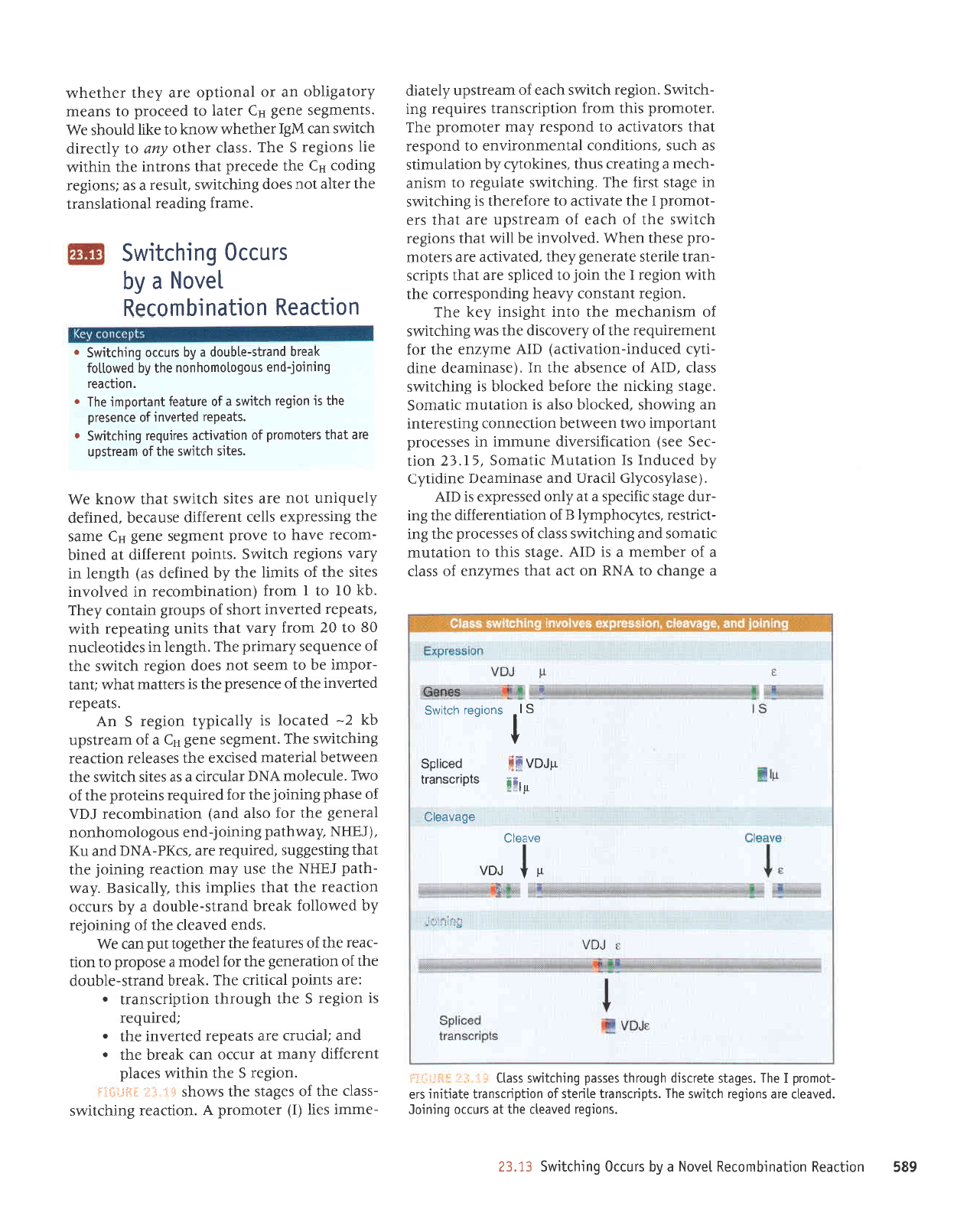
689
uoqleeg uollpurquolau
la^oN
e ^q
srnllg 6urq:1u'r5
g1'E7
'suorber
pa^pall
aql
lp
sjnllo
6uruLol
'palpall
erp suoLbar
qrlrMs
aql
'sldursuerl
aluols
Jo
uorldursuerl
elerlrur sre
-1ouord1aql'sabelsalarlsrpqEnorqlsassedEuLqrlrMsssell
r,i.!.i,t,,riliili
e
a8ueqr ot
VNU
uo
t)e teql
saru,{.zuJ
Jo
sselJ
e
Jo
raqruetu e sl
OIV
'a8e1s
srqt ot
uorlelnul
)peuos
pue
Surqrlrarrs sselr
Jo
sassarord
eqt
3ul
-plrlsar
'saftoqdru,{l
gJo
uoupuuJrelJrp
Jqt
8uI
-rnp
aEels rgnads e
1e,{.po
passardxa
sr
q1y
'
(
aselz(sord19
IrleJlI
pue
aseurureaq
aurprrz(3
dq
parnpul
sI uorlplnw Jrteruos
'91'67
uoll
-ra5
aas) uorlp)rJrsralrp
aunrurur ut sassarord
luelrodrur
oMl ueeMlaq uorl)euuo)
Surlsaralut
ue
Sura,roqs
'pJ>lJolq
oslp sr uorlelnur
JrleuoS
'a8ets
Sutlrtu aqt JJoJaq
pa>lJolq
sr Sutqrluas
ssplJ
'(IV
Io
eruJsqe eql uI
'(aseurueap
autp
-1r,b
parnpul-uo1re,r1rre)
q1y
aru.{zua
eql roJ
luaruarrnbar
aql
;o
,{ranorsrp eql sean
Sulqrlpzrs
Jo
rusrupqrau eql otur
tq8rsur
,(a1
aq1
'uot8ar
luplsuo)
,{,reaq SutpuodsarroJ
eql
qlpzr
uo€ar
1
aq1 urol o1
paIlds
ere
]eql
sldtr;s
-ueJl
alrJels alerauaS r{aq1
'palentpe
JJp srelour
-ord
asaqt
urq6'pellolur Jq
IIIM
teqt
suo€ar
qJlrMs
aql
Jo
qJea
Jo
ruea4sdn
eJe
leql
sJa
-loruord
I
aql Jlelrtle ol aJoJJreql st
Surqrltms
ut a8els
tsJII
aqJ
'Sutqrlltrrs
aleln8ar
ot UISIUP
-q)eru
e 3upean snql
'sauDlo1,{r
Lq uottelnrults
se
q)ns
'suorlrpuoJ
leluauruoJrlua
o1
puodsar
leql
srolpnpre o1
puodsar
Leru raloruord
aq1
'raloruord
slql IuoJJ uotldtnsuerl
sartnbar
8ut
-qJtlMS
'uor8ar
qrlrMs qJee
Jo
rueartsdn
L1a1ep
-Jruurr
san
(f)
reloruord
v
'uollJear
Sutqrlltrs
-ssep
Jql
;o
saSels
eql sMoqs
ii
.i"i:i:
.irjrltt=r
'uor8ar
S
aq1
ulqllm saleld
lueJeJJrp
,{.ueru
te
rnf,Jo upf,
>leJJe JI{} r
pue
jpDnrJ
a,re sleadar
peuelul
ael e
:peJrnDaJ
sr uor8ar
g
aqt
q8norql
uolldrnsueJt
o
:are slurod
leJrlrrJ
eql
'>leJJq
puers-Jlqnop
aql
Jo
uorteJaua8
aql
roy
leporu
e asodord ot
uo1l
-leJr
eqt
Jo
sJJnleeJ
aql raqlaSot
lnd
uer a14
'spua
pJAPJp
Jqt
Jo
Sututofar
,{q
paaurolloy >lpeJq
puprls-Jlqnop e
,{q
stnlro
uorl)eJJ
Jql
reql
salldrur
stql
.dleltseg
'r{em
-Qled
1gg51
Jql esn
,{etu uorlrear
Sututol
aql
teqr
8uusa33ns
'paltnbar
JrB
'sJ>Id-VNO
pue
n>I
'
(f
AHI.{'r(err,rqred
Sututo
[-pua snoSoloruoquou
leraua8
Jqt
ro; osle
pue)
uolleulqluo)rr
f(A
;o
aseqd SururoI
aqt
ro;
partnbar suralord aqt;o
0.441
'alnJJloru
vNo
reIn)JIJ
e se salls
qJlIMs
eql
uae1!|lJq
IPIJaIeU
pASIJXa
eql sasealsJ
UOIIJPJJ
Surqrtuurs
aq1
'tuau8as
aua8
H)
e
Jo
urearlsdn
q{
Z-
pete)ol
sr
[11etrd,{1
uot8ar
5
uy
'sleadar
paualur
eql
Jo
aJuasard
aqt s1 srailPur
leq,lr
1lue1
-rodrur
Jq
01 uaes
lou
saop
uorSar
qJlIMs
eql
;o
aruanbas,{reurrrd
aq1
'qfua1
uI sJplloalJnu
0g
01
0Z
ruor; fue.L
teq1
stlun
Surleadar
q1p,l
'sleadar
pauJAuI
uoqs
Jo
sdnor8
uteluor
z(aq1
'q{
0I
01
I
ruorJ
(uoueutqruo)JJ uI
paAIo^uI
salrs
aqt
Jo
sllu4l aql^q
prulJep
se)
qr8ual
u1
.drBn suor8ar
qJIIMS
'slutod
tuJrJJJIp le
peulq
-uroJJJ
e^pq
01 anord
luaru8as
aua8
H)
arues
aql
Surssardxa
sllet
tueJeJJIp
asneJaq'pJuIJep
^,{.1anbrun
1ou
are
salls
q)1l,lrs
teql
,tlrou>I eM
'salts
qlltms
aq1;o tueatlsdn
are
lpql
sraloutord
]o
uotlelqlP
seltnbal 6utqrluvr5 .
'qeadar
palialut
Jo
aluasald
aq1
st uotbal
qlluv\s
P
Jo
elnleoj
lueloduL
aq1
e
'u0rlleal
6ururo[-pue
snobolouroquou
aql
fig
pamollo]
leelq
puplls-alqnop e Aq srnrro
6utqrltrr5
o
uor.llPeu
u0qeu
rq uolau
la^oN
P
nq
srnllo
6utqr1un5
'eluerJ
Sutpear
IeuouelsueJl
Jql relle
lou
seop
Sutqrlua.s
'llnsJJ
B se
lsuot8ar
Eurpor
H)
eqt aparard
teql
suorlq
eqt
ulqll,rl
ar1
suor8ar
S
aqJ
'sspll
nr4lo
fua o1
,{llrartp
q)lrllrs
uer
ylSl
raqteqM
1!\orDI 01
e>lq
pFoqs
r^^
'sluaru8as
aua8
HJ
Jalpl
01
paalord
ol sueaur
,{role8rlqo
up Jo
Ieuolldo
are
,(aqt raqraqazt
3
fcn
iliil:liili'
df
ro^
I
a^eolc
oSeAE€lC
n
lfri
sldrrcsuerl
tjt61
frb
pecrldg
t
g
;'
suorbat
qclttvtg
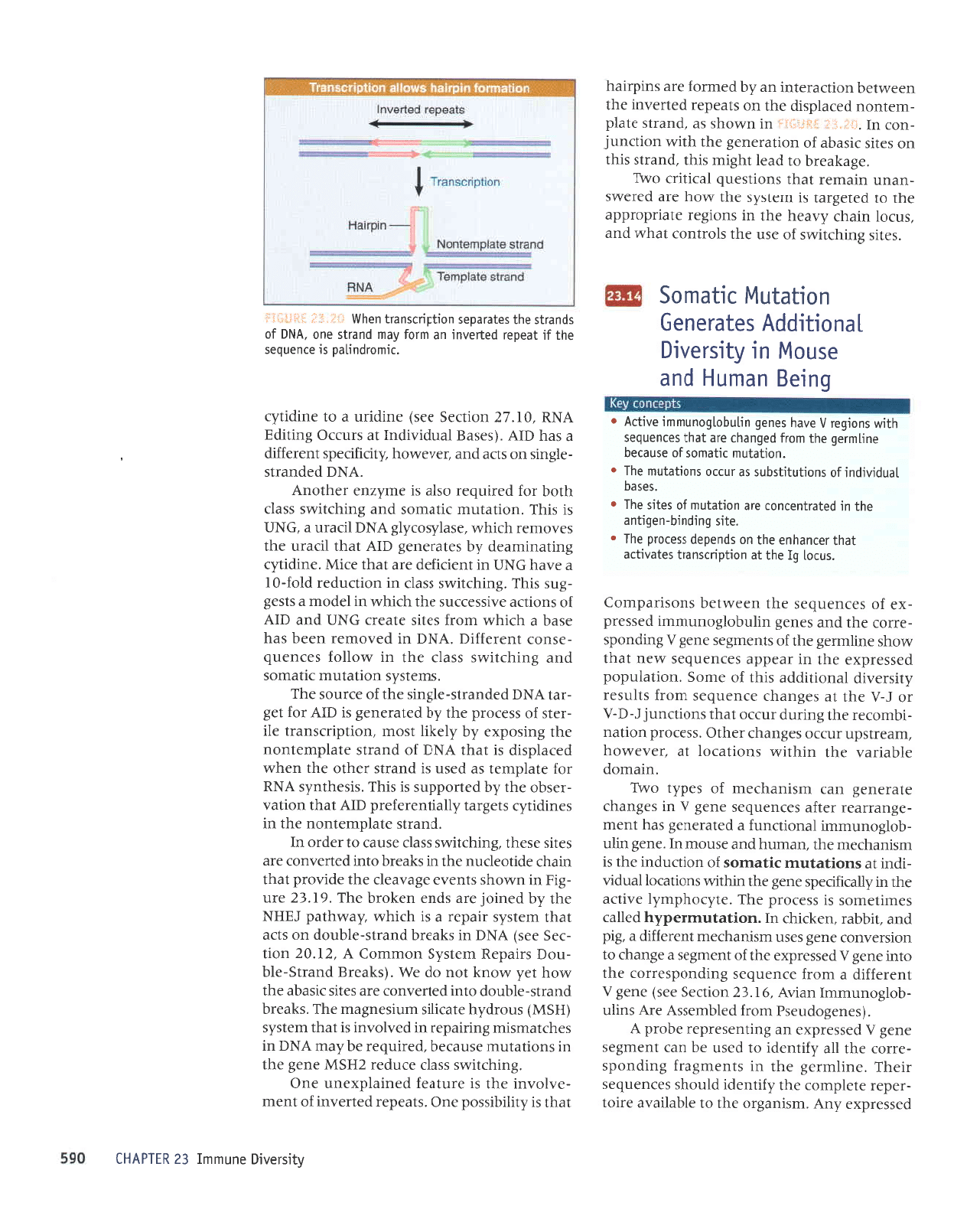
pJSsJJdxa
,{uy
'rusrue8Jo
Jqt ot Jlqplrple
JJrol
-JedJJ
JtJIdruoJ
Jqt ^JrtuJpr
plnoqs
satuanbas
Jraql
'eurlureS
aql
ur stuaru8er;
Surpuods
-eJJoJ
Jql
IIe
,(Jrtuapr
ot
pJsn
Jq uef,
luaruSas
auaS
n
passardxa
ue
Surluasardar
aqord
y
'(sauaSopnasd
uoJJ
palquJssv
JrV
surln
-qolSounurul
upl^V
'gltZ
uortJrs aas)
aua8
I
luJJeJJrp
p
tuoJJ
aruanbas
SurpuodsarroJ
aql
olul aua8
n
passardxa
aql
yo
luau8as
e aSueql
o1
uorsJJluoJ
auaS
sasn usrueqJJru
luaray;rp
e
,3rd
pue'lrqqer'uJ>lJrqJ
uI'uollplnurraddq pa11er
saurrlJruos
sr ssarord
aq1
'ar.{roqdu,{1
anrne
aql rn rllely;ads
aua8 aql
u.rqtrM
suortpJol
lpnpl^
-rpul
lP
suollplnur
JllPruos
Jo
uorpnpur
eql sr
usrueqJJru
eql
'uprunq
pup
Jsnoru
u1
'aua3
u{n
-qopoununur
leuorDunJ
e
paleraua8
spq
luJrx
-a8uerrear
JJIJe
seJuJnbas
aua8
n
ur sa8ueql
eleraua8
upJ
tusrueqJJru
Jo
sad,{1 o,,r41
'ureurop
elqPIJeA
Jql ulqll/!^
suorlpJol
lp
'JJAJ,/!4.Oq
'rueallsdn
rnlo
sa3ueqJ
JJqIO
'ssarord
uorlpu
-rquoJJr
aql Suunp
JnJf,o
lpql
suortrunIf-O-n
Jo
f-A
aq1
le
sa8ueqr
aruanbas
uorJ
sllnser
.dlrsraarp
Ieuorlrppe
srql
Jo
eruos
.uorlelndod
passardxa
eq1 ur
readde
saruanbas
a,rJu
leql
Moqs
JurlruJa8
aqt;o
slueruSJs
aua8
n
Surpuods
-eJJoJ
eqt
pue
saua8
uqnqolSounurur
passard
-xJ
Jo
saruanbas
Jql
uJeMlJq
suosrredruo3
'snto1
61 aq1
1e
uorldursupll
selp^tllp
leql
lalupqua
aq1
uo spuadep
ssarord
aq1
.
'e1rs
6urpurq-ua6rlue
0q1 ur
palplluotuoJ
ele
uoqelnu
j0
salrs elf
o
'sas
eo
lenphtput
j0
suotlnltlsqns
sP lnllo suotlPlnu
alf
o
'uorlelnu
lrlPru0s
Jo
esnetaq
auqureb
aql uol1
pa6ueqr
alp
leql
saluanbas
qlrm
suorbar
n
aneq
saua6
uqnqolbounuur
anrllv
.
6urag
upunH
pue
asnol^l
ur Alrsja^r0
lPuorlrppv
salPl0ua!
uoqPlnhl
lqPuos
'sa1rs
Surqrlrms
Jo
asn aqt
sloJtuoJ
teqm
pup
'snJol
ureqJ
,{..Leaq
Jql ur
suor8ar
alerrdordde
eql
ol
pala8ret
sr
ruals^ds
eql Al.oq
Jrp
pJJJMs
-ueun
ureruJr
teql
suorlsJnb
1err1r-rl
oa41
'a8elearq
ol
ppel
le8nu
slql
,puplls
srqt
uo sJlrs
Jrseqe
Jo
uorlpJJua8
aqr
qrpt
uortrunI
-uOJ
UI'ilrll'ilri
tlii:,rll::
uI
UMOqs
Se
'puerls
aleld
-tueluou
pareldsrp
eq1 uo
sleadar
pJuJAur
aq1
uJJMleq
uorlJeJJlur
ue ,{q
p:ruto;
a.re surdrreq
Altsle^ro sunururl
€z
ulldvHl
leqt
sr ltrgqrssod
auo
'sleadar
pJtJenur
Jo
luau
-J^lolur
Jql
sr JJnlea;
paureldxaun
JUO
'Surqrlurrs
sselJ aJnpeJ
ZHSW
aua8 aql
ur suortetntu
JSneJJq
'parrnbar
aq l,eru
vNe
ul
seqJlprusru
Surrredar
ur
pallonur
sI
lpql
uals^s
(ttSW)
snorp,{.q
ale)llrs runrsauEeru rqJ's{perq
pueJls-Jlqnop
olur
paua^uoJ
JJp sJlrs Jrseqe Jq1
.uoq
la.{
.ttou>l
1ou
op aM
'(s>1earg
puerts-alq
-noq
srrpdJg
ualsdg uouruo)
y
'ZI'0e
uqp
-ra5
aas)
VNCI
uI s>lpJJq
puprls-Jlqnop
uo stJp
teql
ruats.{s ledar
e sr
qJrqM
'u(e,uqred
taUN
aq1 ^q
paurol
Jrp spur uJ>loJq
eqJ
'6I'€Z
rrn
-8tg
ul uMoqs stuJAJ
a8eleap aq1 aprnord
leql
UIPqJ JPIIOJI]NU
Jql ln $IPJIq
OluI
PAUJAUO)
JJE
sJlls
Jseql
'Surqrluzr.s
ssplJ esneJ 01 rJpro
uI
'puPns
aleldrualuou
aq1 ur
sautptilr
sla8rel LlleuuaraJard
q1y
reqt
uorlp^
-rasqo
aql Lq
pJuoddns
sl sIqJ
'srsaqlu,{.s
y1r15
ro; alelduar
sp
pJsn
sr
pueJls
Jeqlo Jqt uaqm
pareldsrp
sr
teql
yNC
Jo
puprls
rteldurJtuou
aql Sursodxa ,{q
,{1a>1u
tsour
'uorldrJJsupJt
alr
-rals
Jo
ssarord
aql
^q
palerauaS
sl
oIV
rol
1a3
-lpl
VNO
papuerts-a18urs
Jqt
Jo
JJlnos JqJ
'suals,{s
uorlPlnur lrtPluos
pue
Surqrlrus
sselJ eql ur ,rrolloJ
seJuJnb
-JSUOJ
IUJJEJJIq
'VN(I
UI
PA^OIUJJ
UJAq
SPq
JSeq
P
qJIqM
ruoJJ satrs elperr
tNn
pup
aIV
}O
SUOI1JE
JAISSEJJNS Jql
qJIqM
UI
IAPOU
E
S1SA3
-3ns
srql
'Surqrlraas
ssplJ ur uorlJnpJr
ploJ-gI
p
r^pq
JNn
ul
tuJrJrJJp
ere
leqt
arq41
'aurp4.{r
SurtBurueap
Lq
saleraua8
GIv
teqr
IrJpJn
Jq1
sa^oruJJ
qJIqM
'ase1u(sor,{13
yN(
IrJpJn
e
')Nn
sl slqJ
'uorlptnru
Jllptuos
pue
3urqrll,u,s
sselJ
qloq
JoJ
parrnbar
osle sr
aru^zuJ Jaqlouv
'YN(
papuprls
-afurs
uo sDe
pue
:a^JMoq
tloryrads
tueJalJrp
e seq (IV
'(saseg
Ienpr^eul
le
srnJ)O
SulttpE
VNU
'0I'lZ
uoIDaS
aas) aupun
e ol aurpt/J
'rtuorpurled
s1 aruanbas
eq1;r
leadar
pailalur
up
ullo1 feu
puetls
euo
'VN6
Jo
spuPrls oql
saletedes uorld!.Dsue.r1
uaqM
iril"r
i:
ji:lrt.r-i
j
